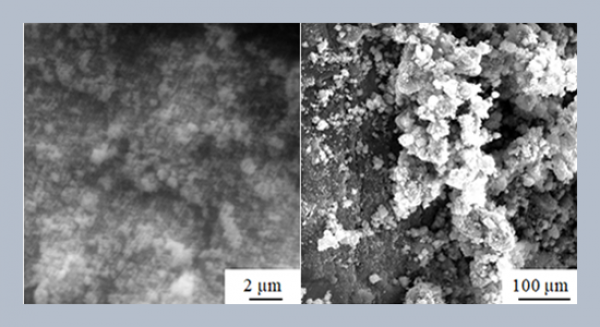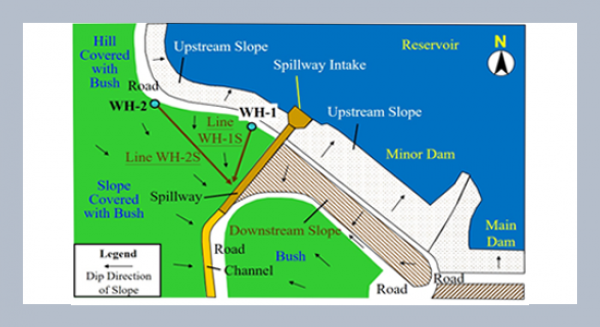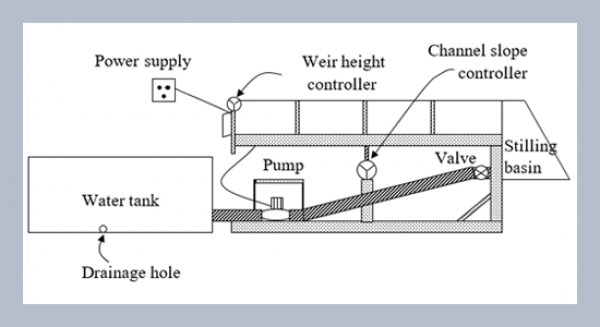REFERENCES
- ACI Committee 318, 2014. Building code requirements for structural concrete and commentary, American Concrete Institute, Farmington Hills (MI)
- Allahverdi, A. Maleki, A., Mahinroosta, M. 2018. Enhancement of hydraulic activity of slag-blended portland cement. Asian Journal of Civil Engineering, 19, 1009–1020.
- Andrew, R. 2018. Global CO2 emissions from cement production, 1928–2017. Earth System Science Data, 10, 2213–2239.
- Babu, K, Kumar, R. 2000. Efficiency of ggbs in concrete. Cement and Concrete Research, 30, 1031–1036.
- Cheng, A., Huang, R., Wu, J., Chen, C. 2005. Influence of ggbs on durability and corrosion behavior of reinforced concrete. Materials Chemistry and Physics, 93, 404–411.
- Crossin, E. 2015. The greenhouse gas implications of using ground granulated blast furnace slag as a cement substitute. Journal of Cleaner Production, 95, 101–108.
- Eguchi, K., Takewaka, K., Yamaguchi, T., Ueda, N. 2013. A Study on durability of blast furnace slag cement concrete mixed with metakaolin-based artificial pozzolan in actual marine environment. Proceeding of Third International Conference on Sustainable Construction Materials and Technologies.
- Garcia-Lodeiro, I., Palomo, A., Fernández-Jiménez, A. 2015. Crucial insights on the mix design of alkali-activated cement-based binders. handbook of alkali-activated cements, Mortars and Concretes, 49–73.
- Grist, R., Paine, K., Heath, A., Norman, J., Pinder, H. 2015. The environmental credentials of hydraulic lime-pozzolan concretes. Journal of Cleaner Production, 93, 26–37.
- Hamada, M., Thomas, B., Yahaya, F., Muthusamy, K., Yang, J., Abdalla, J., Hawileh, R. 2021. Sustainable use of palm oil fuel ash as a supplementary cementitious material: a comprehensive review. Journal of Building Engineering, 40, 102286.
- Hawileh, R., Abdalla, J., Fardmanesh, F., Shahsana, P. 2017. Performance of reinforced concrete beams cast with different percentages of GGBS replacement to cement. Archives of Civil and Mechanical Engineering, 17, 511–519.
- Huntzinger, D., Eatmon, T. 2009. A life-cycle assessment of Portland cement manufacturing: comparing the traditional process with alternative technologies. Journal of Cleaner Production, 17, 668–675.
- Jeong, Y. Yum, W., Jeon, D., Oh, J. 2017. Strength development and microstructural characteristics of barium hydroxide-activated ground granulated blast furnace slag. Cement and Concrete Composites, 79, 34–44.
- Joanna, P., Sangeetha, S. 2015. Flexural behaviour of reinforced concrete beams with partial replacement of GGBS. American Journal of Engineering Research, 3, 119–127.
- Junaid, M.T., Karzad, A.S., Leblouba, M. 2020. Investigation on the properties of ambient cured alkali activated binder concrete. International Journal of Applied Science and Engineering, 18, 2020339.
- Karikalan, A., Prabaghar, A., Saravanan, J. 2021. Flexural behaviour of GGBS concrete beam with steel, hybrid FRP and GFRP bars. Turkish Journal of Computer and Mathematics Education, 12, 5719–5729.
- Kyong Yon, Y., Kyum, K. 2005. An experimental study on corrosion resistance of concrete with ground granulate blast-furnace slag. Cement and Concrete Research, 35, 1391–1399.
- Ma, C., Awang, A., Omar, W. 2018. Structural and material performance of geopolymer concrete: a review. Construction and Building Materials, 186, 90–102.
- Mustafa, S., Hassan, H. 2018. Behavior of concrete beams reinforced with hybrid steel and FRP composites. HBRC Journal, 14, 300–308.
- Nagaratnam, H., Rahman, M., Mirasa, A., Abdul Manan, M., Lame, S. 2016. Workability and heat of hydration of self-compacting concrete incorporating agro-industrial waste. Journal of Cleaner Production, 112, 882–894.
- Nawaz, W. Abdalla, J., Hawileh, R., Alajmani, H. 2019. Experimental study on the shear strength of reinforced concrete beams cast with lava lightweight aggregates. Archives of Civil and Mechanical Engineering, 19, 981–996.
- O’Connell, M., Mcnally, C., Richardson, M. 2012. Performance of concrete incorporating ggbs in aggressive wastewater environments. Construction and Building Materials, 27, 368–374.
- Oner, A., Akyuz, S. 2007. An experimental study on optimum usage of GGBS for the compressive strength of concrete. Cement and Concrete Composites, 29, 505–514.
- Ramakrishnan, K., Pugazhmani, G., Sripragadeesh, R., Muthu, D. 2017. Experimental study on the mechanical and durability properties of concrete with waste glass powder and ground granulated blast furnace slag as supplementary cementitious materials. Construction and Building Materials, 156, 739–749.
- Samad, S., Shah, A. Limbachiya, M. 2017. Strength development characteristics of concrete produced with blended cement using ground granulated blast furnace slag (GGBS) under various curing conditions. Sādhanā, 42, 1203–1213.
- Saranya, P., Nagarajan, P., Shashikala, A. 2018. Eco-friendly GGBS concrete: a state-of-the-art review. IOP Conference Series: Materials Science and Engineering, 330, 012057.
- Siddique, R., Bennacer, R. 2012. Use of iron and steel industry by-product (GGBS) in cement paste and mortar. Resources, Conservation and Recycling, 69, 29–34.
- Siddique, R., Bennacer, R. 2013. Utilization (recycling) of iron and steel industry by-product (GGBS) in concrete: strength and durability properties. Journal of Material Cycles and Waste Management, 16, 460–467.
- Thomas, B., Yang, J., Mo, K., Abdalla, J. 2021. Biomass ashes from agricultural wastes as supplementary cementitious materials or aggregate replacement in cement/geopolymer concrete: a comprehensive review. Journal of Building Engineering, 40, 102332.
- Topçu, I., Boğa, A. 2010. Effect of ground granulate blast-furnace slag on corrosion performance of steel embedded in concrete. Materials & Design, 31, 3358–3365.
- Turner, L., Collins, F. 2013. Carbon dioxide equivalent (CO2-e) emissions: A comparison between geopolymer and OPC cement concrete. Construction and Building Materials, 43, 125–130.
- Wan, H., Shui, Z., Lin, Z. 2004. Analysis of geometric characteristics of GGBS particles and their influences on cement properties. Cement and Concrete Research, 34, 133–137.
- Wu, Y., Huang, R., Tsai, C., Lin, W. 2015. Recycling of sustainable co-firing fly ashes as an alkali activator for ggbs in blended cements. Materials, 8, 784-798.
- Yuksel, I., 2018. Blast-furnace slag. Waste and Supplementary Cementitious Materials in Concrete, 361–415.















